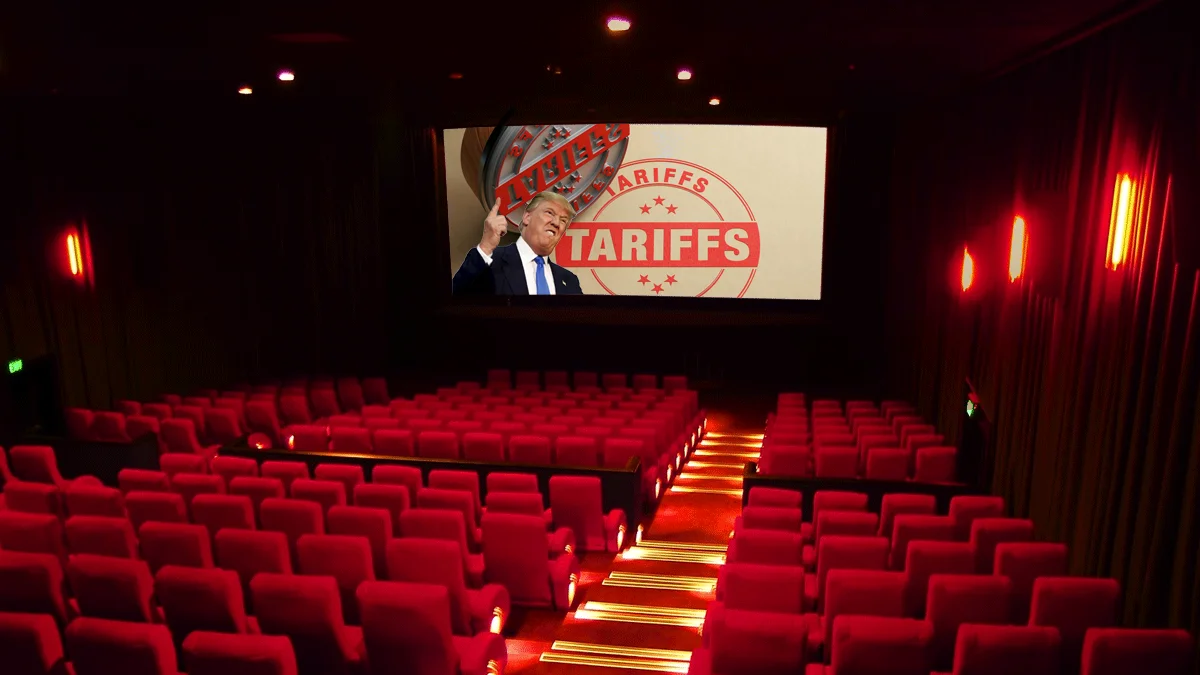Necessary Always Active
Necessary cookies are required to enable the basic features of this site, such as providing secure log-in or adjusting your consent preferences. These cookies do not store any personally identifiable data.
|
||||||
|
||||||
|
||||||
|

In Focus
A proposed tariff policy in the United States is sparking concern across the Indian entertainment sector. President Donald Trump has signaled the possibility of a 100 percent import duty on foreign films, directly affecting the release and profitability of Indian movies in the US market. This potential move has raised alarms within Bollywood, Tollywood, and regional film industries that rely heavily on diaspora audiences abroad.
The impact of US tariffs on Indian film industry could be significant. Industry estimates suggest the Indian diaspora spends around USD 100 million annually to watch films from various regional languages in American theaters. If the tariff is enforced, the cost of acquiring distribution rights in the US would double. For instance, a distributor paying ₹5 crore for rights could see the cost increase to ₹10 crore.
This financial pressure is expected to be passed down to consumers through ticket pricing. Average ticket rates of USD 10 to 15 may climb to USD 20 or even 30, potentially reducing viewership and profitability. The policy also poses risks for associated channels such as streaming rights, satellite licensing, and cross-border co-productions, given the intertwined nature of modern film distribution. Earlier this year, Trump also imposed a 50% tariff on India.
US Movie Tariffs Impact Indian Film Exports:
Industry specialists have pointed out complexities in executing such a Hollywood foreign film policy. Unlike physical imports, movies today are largely delivered digitally through satellite transmission or content delivery networks. The feasibility of imposing and collecting an US import duty on films distributed through non-physical formats remains legally and technically unclear.
Important Points to Note
Industry observers warn of wider consequences beyond cinema halls. “The US market is critical for Indian films, particularly for Telugu and Tamil releases which see high occupancy rates overseas,” stated a trade source quoted by Hindustan Times. Such sentiments underline the growing reliance of Indian studios on overseas revenue, especially from the US where second-generation diaspora audiences are a core demographic.
The debate also underscores the possibility of retaliatory trade measures from countries whose film industries are targeted. While Hollywood continues to dominate global entertainment exports, policies like the Trump 100 percent film tariff could trigger frictions in global creative industries and alter traditional market access arrangements. Trump has also warned nations implementing digital taxes on services could face “subsequent additional tariffs” on goods if they do not remove such rules.
For Indian filmmakers, distributors, and associated businesses, the proposed tariffs represent more than a regulatory hurdle. They underscore the vulnerability of globalized industries to shifting trade policies. If implemented, the US movie tariffs impact may reduce margins, discourage smaller studios from pursuing US releases, and prompt the industry to diversify toward other international markets.
The coming months will be decisive as discussions around feasibility, legality, and enforcement unfold. For now, the Indian film sector remains watchful of how this potential policy could reshape its engagement with one of its most lucrative overseas markets.